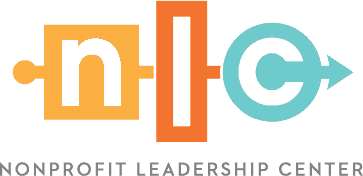The M+R Benchmarks Study is an annual report that highlights the latest nonprofit data and trends in digital fundraising and marketing. The study looks at billions of emails and SMS messages, millions of website visits and thousands of social media posts from hundreds of nonprofits (215 in the most recent report to be exact).
Findings from the 2023 M+R Benchmarks study reveal four important insights all nonprofit organizations should know.
4 Implications for Nonprofit Organizations from the 2023 M+R Benchmarks Study
While the 2023 M+R Benchmarks Study is chockfull of interesting insights, four findings stand out this year that every nonprofit should be thinking about and acting on in the months ahead. Here’s how to harness the 2023 insights to help move your nonprofit’s fundraising, marketing and mission forward.
1. 363 Other Days Matter as Much as Giving Tuesday and Year-End
In 2022, average online revenue declined 4% from 2021 to 2022. With the exception of disaster relief/aid and animal welfare and wildlife organizations, most nonprofits reported a decline. Hunger and poverty nonprofits reported the largest online revenue declines after experiencing record-breaking growth during the pandemic.
Most notably, the 2023 M+R Benchmarks Study reports declines for nonprofits on the two biggest giving days of the year — Giving Tuesday and December 31:
- Giving Tuesday donations accounted for 3% of total online revenue in 2022, but online revenue declined by 13% from 2021, and email revenue on Giving Tuesday declined by 18%.
- The last day of the calendar year accounts for 5% of revenue, but overall revenue on December 31, 2022, was down 13% from the same day the previous year, and email revenue on that day declined by 22%.
What this means for nonprofit organizations: You can’t rest your laurels on traditionally popular fundraising moments in time. Growth and engagement rely on authentic year-round communication and cultivation that is consistent and compelling. Just like you would nurture any relationship, you must do the same with donors and prospects. That means courting them beyond a first date and reminding them outside of birthdays and holidays why they mean so much to you. (Think of Giving Tuesday or December 31 like Valentine’s Day — true love requires a heck of a lot more than heart-shaped chocolates on February 14 😉).
Not sure where to start? Ask your audiences what they need and want. Understanding what motivates and limits their engagement with your nonprofit can be as simple as scheduling some one-on-one conversations or as sophisticated as conducting an online survey or qualitative interviews. Then, create (or update) an integrated content calendar that aligns your audience insights, relevant moments each month and your organization’s mission. Meeting your audiences where they are across channels is key, knowing that donors want and expect to have a variety of ways to give, interact and engage.
2. Successful Nonprofit Organizations Must Prioritize Monthly Gifts
If your nonprofit doesn’t have a focused monthly giving program or isn’t prioritizing acquiring, cultivating and retaining monthly donors, now is the time to do so. The 2023 M+R Benchmarks Study data revealed that while revenue from one-time online giving decreased by 12%, monthly online giving rose 11% — accounting for 28% of total online revenue.
What this means for nonprofit organizations: As if you need a better reason to focus on a sustainer strategy, research from Classy showed that recurring donors’ lifetime value is five times greater than a one-time donor, and 85% of recurring donors take another action, such as making an additional donation, telling a friend to become a monthly donor or fundraising.
When thinking about your monthly giving program, start with “why.” Research from Classy shows the top three reasons donors choose to give a monthly gift over a one-time gift is because:
They feel their recurring gift enables them to continuously support the organization.
They feel their ongoing donation makes more of an impact than a one-time gift.
They feel more connected to a nonprofit when they give regularly.
3. Effective Digital Marketing Integrates Advertising & Email at a Deeper Level
While executing a multi-channel approach for marketing and fundraising is a best practice, the 2023 M+R Benchmarks Study revealed that digital advertising and email programs are dependent on each other beyond messaging integration. As the report says:
"Making the most of your advertising program depends on having an effective email program, but also making the most of your email program depends on having an effective advertising program."
2023 M+R Benchmarks Study Tweet
What this means for nonprofit organizations: Nonprofits increased their digital ad spending by 28% in 2022. Acquiring donors directly from advertising, like search and social media platforms, can be costly if you only look at your return on ad spend (known as ROAS). While it’s tempting to measure success based on ROAS, nonprofits must continue to look at the long game when it comes to building relationships and loyalty. That means a positive return on investment should extend beyond that first action. Just like a tree doesn’t grow overnight, neither do loyal donors (and loyal donors certainly don’t grow on trees).
Turning a one-time donor into a repeat or monthly supporter requires an effective email strategy, including an inspiring, relevant and motivating welcome series, ongoing monthly cultivation messages that provide multi-faceted storytelling and tangible impact examples, and other actions by staff and volunteers to nurture an authentic relationship with the donor’s motivations in mind.
4. While Web Traffic Matters, Conversion Is What Counts
The 2023 M+R Benchmarks Study shows that while the majority of nonprofit website traffic came from mobile devices in 2022 (57%), desktop users donated more frequently and at higher amounts.
The average gift made on a desktop device was $194 compared to $94 on a mobile device.
What this means for nonprofits: Nonprofit organizations must continue to take a mobile-first mentality to their digital strategy and design, but even more important is a focus on conversion. Web content must be easy to navigate and clearly path people to their next action. Donation forms must leverage best practices and integrate content, images and functionality to drive conversions. Likewise, supporting webpages and blog posts should include contextual calls to action to donate or sign up for email or SMS that make the natural next step clear, easy and compelling.
In summary, the best digital data to benchmark your nonprofit against is your own. However, the annual M+R Benchmarks Study is a helpful tool to compare your organization to other nonprofit organizations across various sizes and sub-sectors. To learn more about the 2023 M+R Benchmark Study findings, the report methodology, and the benchmarks team, visit mrbenchmarks.com.
Enhance Your Nonprofit’s Fundraising & Marketing Strategies
Ready to take your fundraising and marketing to the next level? Check out the Nonprofit Leadership Center’s upcoming classes and certificate programs to strengthen your skills, nonprofit and community.


